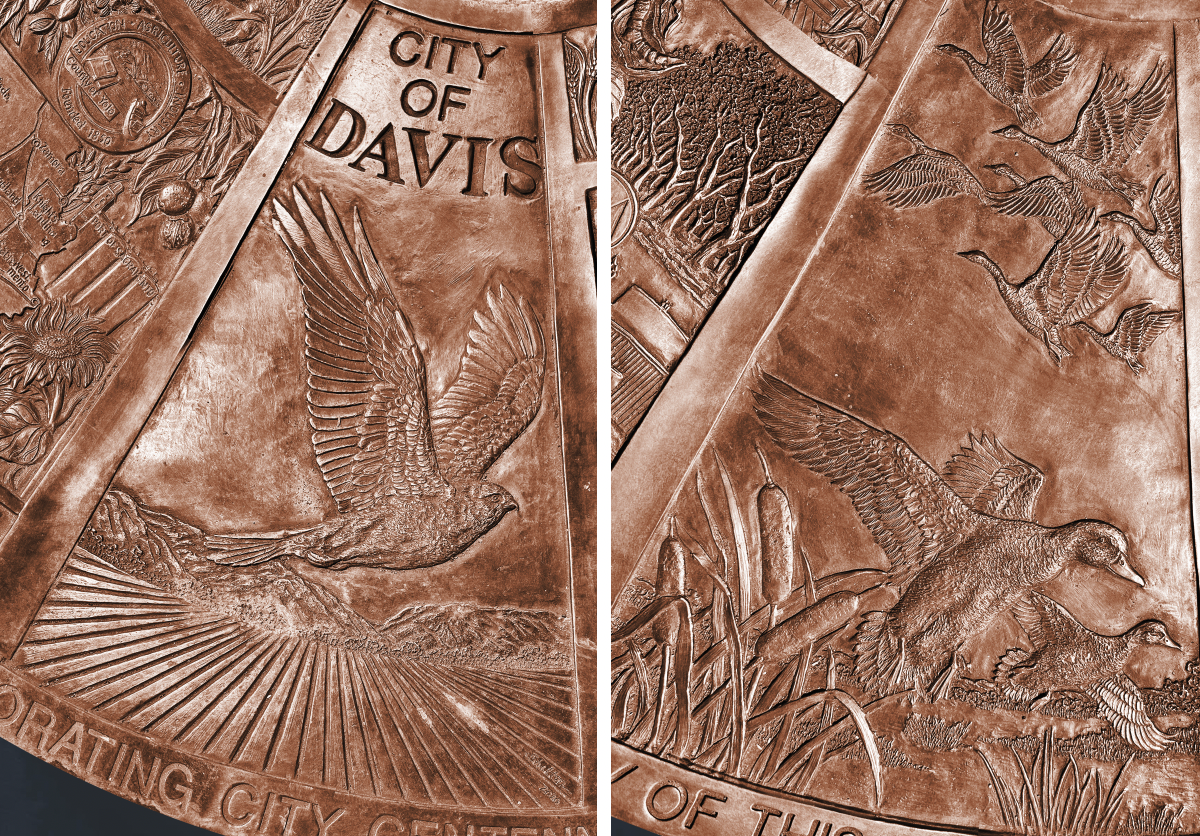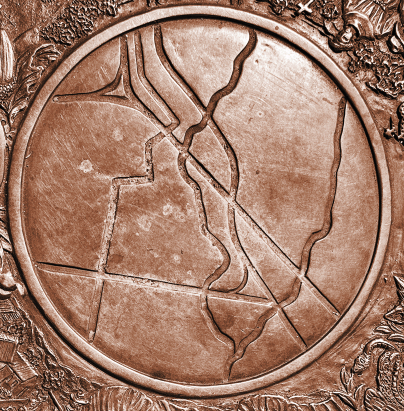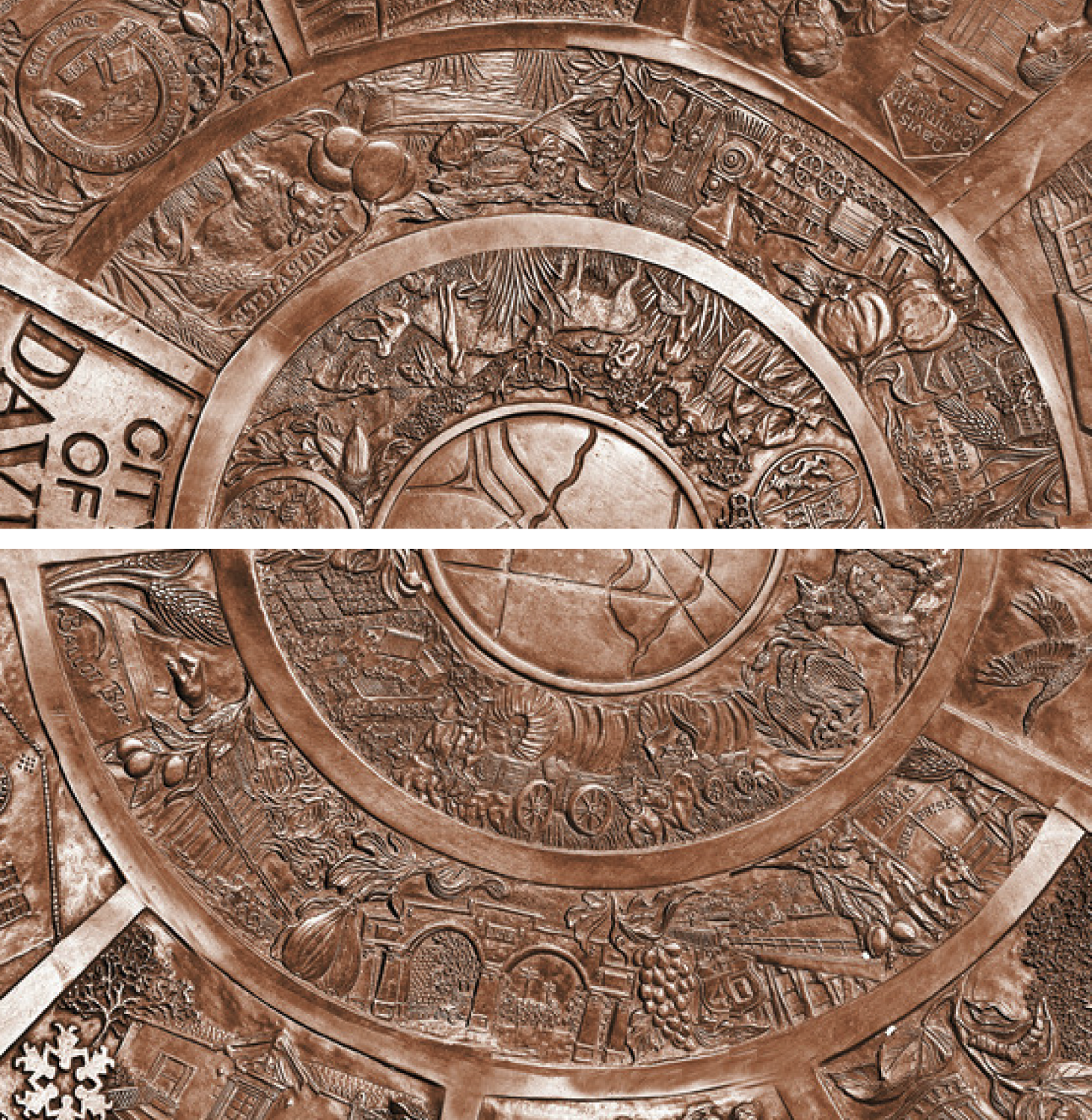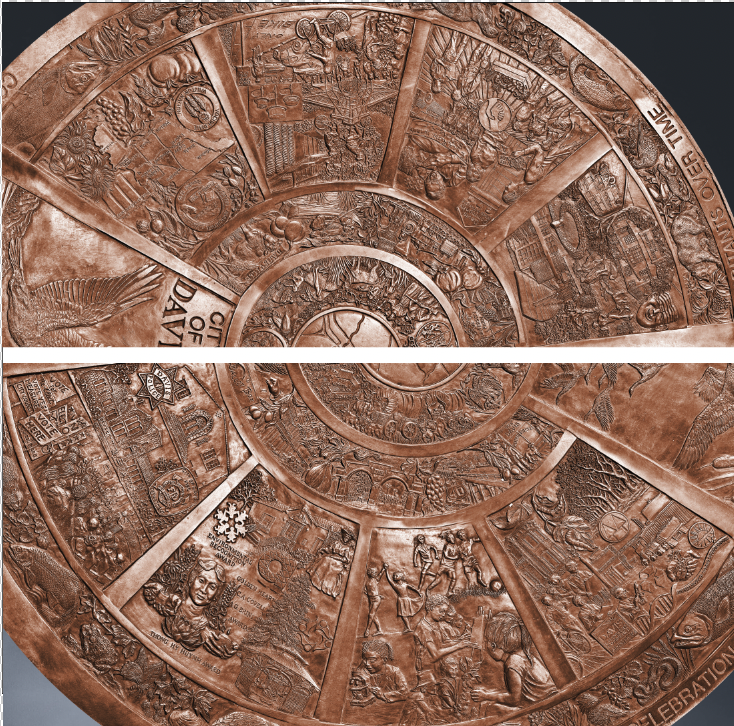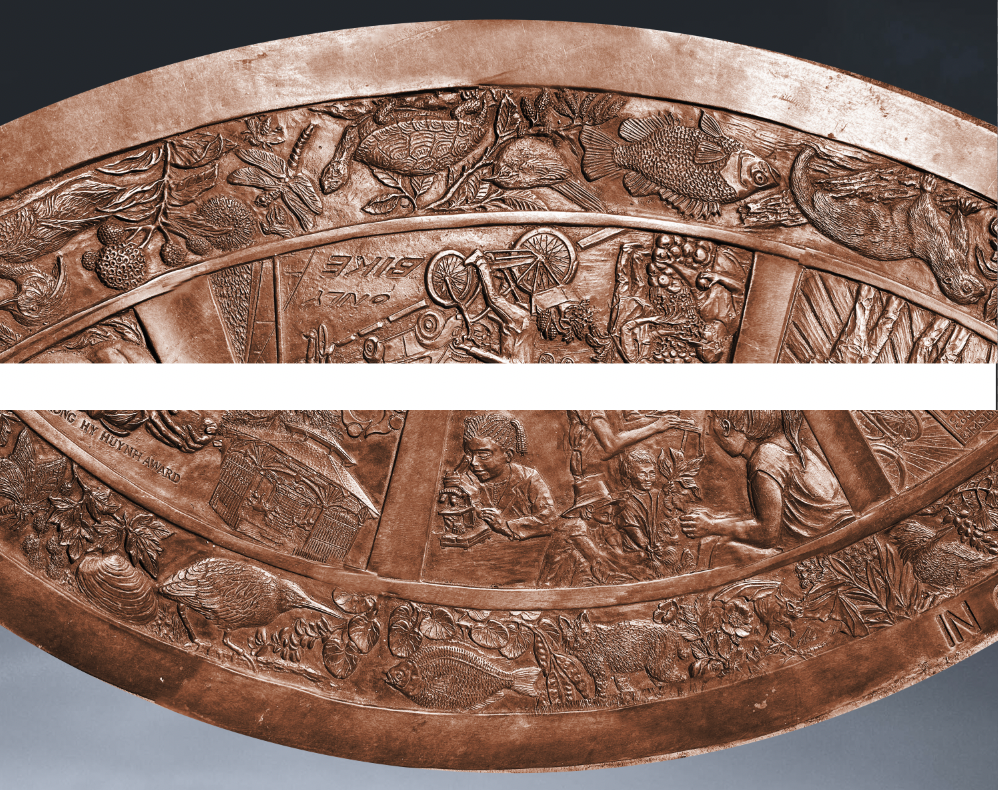
Outer Ring
The Outer Ring showcases the native flora and fauna of Putah Creek, honoring the region's indigenous people and original landscape while celebrating the creek's restoration. Originally, the land's fertility attracted homesteaders, but the creek was diverted, leading to its dryness. Thanks to the efforts of local citizens, the dams were legally required to maintain natural stream flows, resulting in a remarkable increase in riparian species and the return of Steelhead Trout and chinook Salmon.
